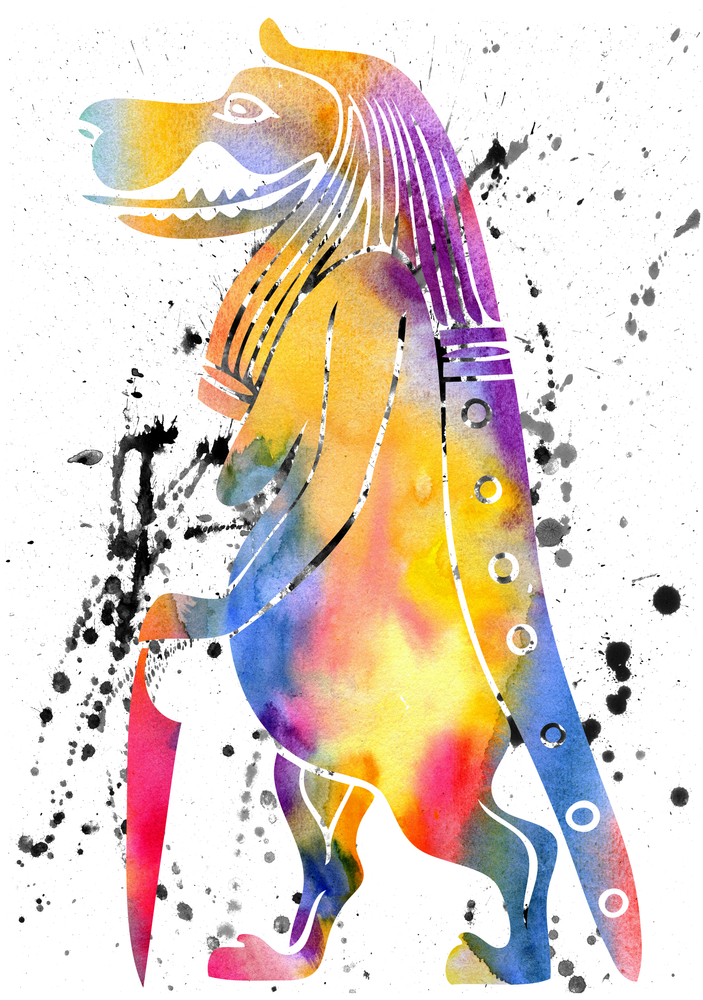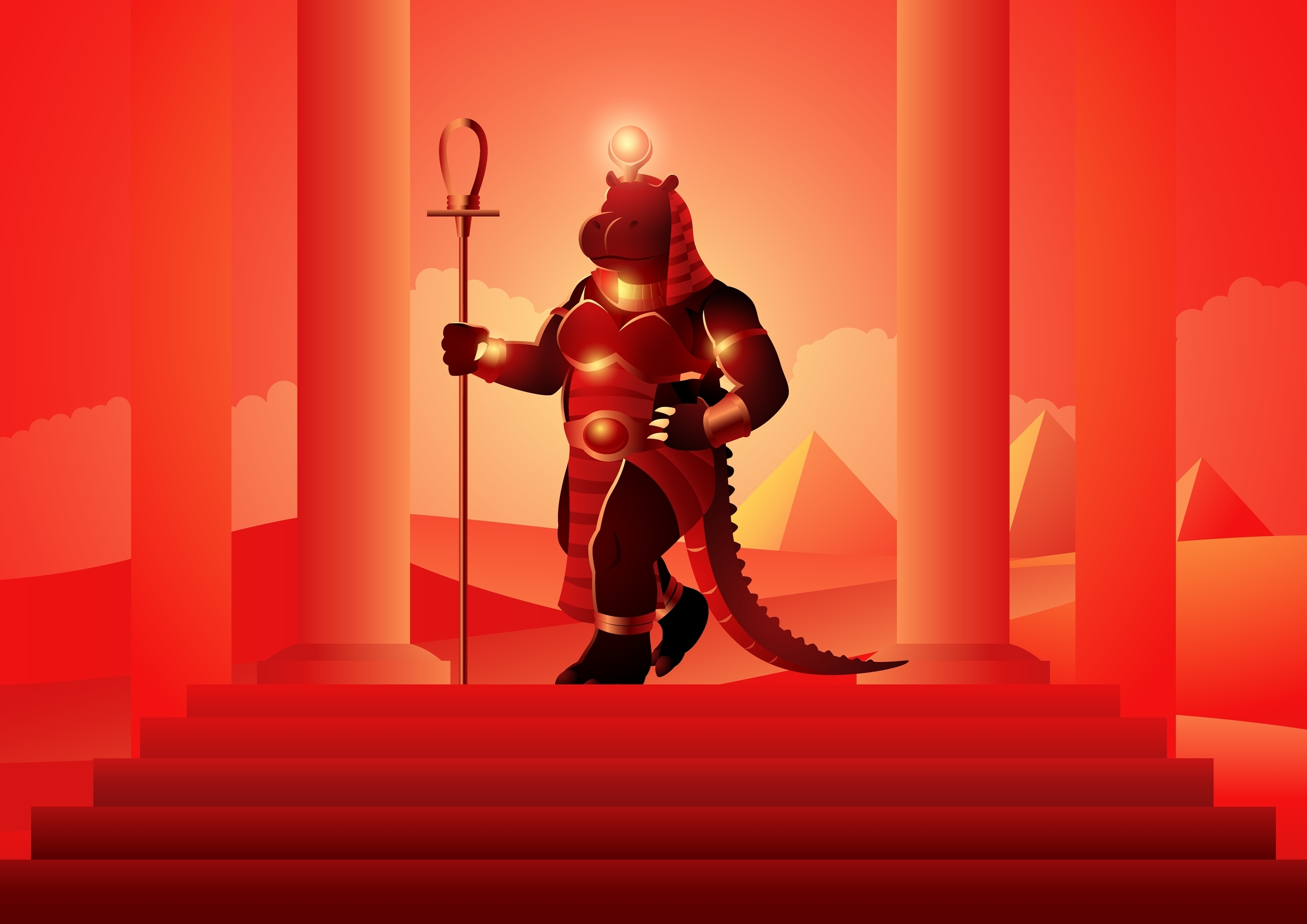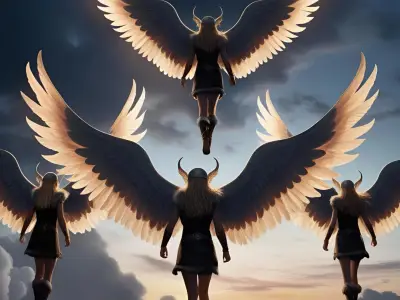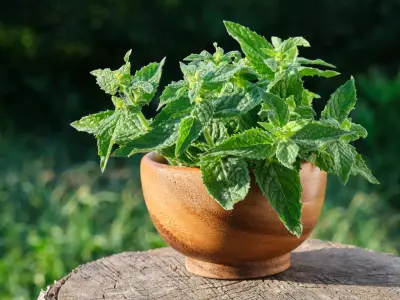Among the Egyptian gods and goddesses, Taweret stands out with her combination of a hippopotamus body, lion limbs, and crocodile tail. This blog post explores Taweret's myths, legends, and powers, offering deeper insights into the fascinating lives of ancient Egyptians.
Jump to:
- Who is Taweret?
- What is Taweret the Goddess of?
- Depictions and Attributes of Taweret
- Is Taweret Good or Bad?
- Taweret's Role in Myths and Legends
- Taweret's Powers
- Taweret's Symbols
- Taweret's Family and Relationships
- Worship and Rituals
- Taweret's Legacy
- Frequently Asked Questions About Taweret
- Study Egyptian Mythology for £29
Who is Taweret?
Taweret is an intriguing deity from ancient Egyptian mythology. She is often depicted as a female hippopotamus with the features of a lion and a crocodile. Her name means "The Great One" in Egyptian, reflecting her important role in the pantheon. Unlike many deities who were worshipped in temples and grand monuments, Taweret was a household goddess, worshipped by everyday people for her protective qualities.
Recommended for you!
Best SellersWhat is Taweret the Goddess of?
Taweret is primarily known as the goddess of childbirth and fertility. She was believed to protect women during pregnancy and childbirth, ensuring the safety of both mother and child. Additionally, Taweret was associated with rejuvenation and rebirth, which is why she often appears on amulets and household items meant to safeguard the home and family.
Depictions and Attributes of Taweret

Taweret is uniquely characterised by her composite form, combining features of a hippopotamus, lion, and crocodile. She is typically shown standing on her hind legs, with a swollen belly, symbolising pregnancy. This depiction highlights her role as a guardian of mothers and children.
Does Taweret Have Wings?
Unlike many other deities in various mythologies, Taweret is not depicted with wings. Her strength and protective nature are symbolised through her robust and powerful appearance rather than the grace or mobility associated with wings.
Is Taweret Good or Bad?
Despite her fearsome look, Taweret is considered a kind and protective deity. Her fierce visage was intended to scare away evil spirits and protect those under her care, making her a deeply positive figure in the households of ancient Egypt.
Taweret's Role in Myths and Legends
Taweret's presence in Egyptian myths and legends is less about grand narratives and more about her practical, everyday influence. She appears in stories as a guardian against evil spirits and harmful forces, particularly during childbirth. Here are some key myths and legends featuring Taweret:
Taweret in the Book of the Dead
In the ancient Egyptian Book of the Dead, Taweret is depicted as a protector of the deceased, guiding them safely through the dangers of the afterlife. Her association with rebirth made her an important figure in funerary practices, offering reassurance of safe passage and protection in the afterlife.
Taweret and the Nile
One legend speaks of Taweret's role in controlling the Nile's floodwaters. The annual flooding of the Nile was essential for agriculture, and Taweret was believed to help maintain the balance of these waters, ensuring they were beneficial rather than destructive. Her connection to water, given her hippopotamus form, emphasised her influence over this life-giving force.
Taweret and the Four Sons of Horus
Taweret is also connected to the myth of the Four Sons of Horus, who were protectors of the canopic jars containing the organs of the deceased. Taweret was believed to assist these deities in their protective duties, ensuring that the organs were safe and that the deceased could be reborn in the afterlife. Her role reinforced her image as a guardian of life and rebirth.
Taweret and Set
In another tale, Taweret confronts the chaotic god Set, who represents disorder and evil. As a protector, Taweret's powerful appearance and powers were said to help ward off Set's malevolent influence, particularly during childbirth when new life was most vulnerable.
Taweret and the Solar Boat
One myth involves Taweret aiding the sun god Ra on his nightly journey through the underworld on the Solar Boat. Taweret's protective nature was called upon to help defend Ra against the dangers and demons he encountered in the dark realms, ensuring the sun's safe return at dawn.
Taweret's Powers

Taweret is known for her protective and nurturing abilities, which were highly worshipped in ancient Egyptian households. Here are some of her primary powers:
- Protection During Childbirth: Taweret was believed to safeguard mothers and their newborns during childbirth, ensuring their safety and well-being.
- Guardianship Against Evil: Her fearsome appearance was thought to ward off evil spirits and malevolent forces, protecting the household from harm.
- Fertility and Rebirth: Taweret's association with fertility extended to her role in rejuvenation and rebirth, aiding in the continuation of life and the renewal of health.
Taweret's Symbols
Taweret's symbols are deeply connected to her protective and nurturing roles, and they were commonly used in amulets and household items:
- Composite Animal Form: Taweret is depicted with the body of a hippopotamus, the limbs of a lion, and the tail of a crocodile, symbolising her strength and protective nature.
- Pregnant Belly: This feature highlights her connection to motherhood, childbirth, and fertility.
- Sa Symbol: Often seen in depictions of Taweret, the sa hieroglyph represents protection and is a common element in amulets associated with her.
- Household Amulets: Taweret's image was frequently used in amulets designed to invoke her protective powers, particularly during childbirth and in safeguarding the home.
Taweret's Family and Relationships
Taweret's connections with other deities in Egyptian mythology enhance her role as a protector and nurturer. Here are key points about her family and relationships:
- Spouse: Bes - Taweret is often linked with Bes, another household deity known for his protective qualities. Together, they formed a powerful duo safeguarding the home and family.
- Connection to Hathor - Taweret is sometimes associated with Hathor, the goddess of motherhood, love, and joy. This connection reinforces her role in childbirth and fertility.
- Associations with Other Protective Deities - Taweret is connected with other deities who have protective roles, such as Anubis and Sobek, further highlighting her importance in the protection of the home and family.
- Role with the Four Sons of Horus - Taweret assisted the Four Sons of Horus in protecting the canopic jars, demonstrating her extended influence in safeguarding the dead and ensuring their rebirth.
Worship and Rituals
Taweret was primarily worshipped in the home rather than in grand temples, reflecting her role as a household deity. Families would keep statues and amulets of Taweret to invoke her protection, especially during childbirth. These amulets were often placed in the birthing chamber to ensure the safety of both mother and child.
Rituals dedicated to Taweret included offerings of food, drink, and small votive objects, which were believed to appease her and secure her protective presence. Her worship was deeply personal and practical, focusing on everyday life and the well-being of the family. Unlike other deities who had large-scale festivals, Taweret's veneration was more intimate, embedded in the daily routines and special family events of ancient Egyptians.
Taweret's Legacy

Taweret’s legacy endures through the countless amulets, statues, and images found in archaeological sites. Her role as a protector of mothers and children has cemented her place in the pantheon of Egyptian gods as a symbol of care, protection, and maternal strength.
Modern Interpretations
In modern times, Taweret continues to be a symbol of protection and motherhood. She appears in various forms of media, from books to television series, often highlighting her unique and powerful nature.
Recommended for you!
Best SellersFrequently Asked Questions About Taweret
What Does Taweret Look Like?
Taweret is depicted as a composite figure with the body of a hippopotamus, the limbs of a lion, and the back and tail of a crocodile. She often stands on her hind legs and has a pregnant belly, symbolising her role in childbirth and fertility.
Who is Taweret Married To?
Taweret is often linked with the god Bes, another household deity known for his protective qualities. Together, they formed a powerful duo safeguarding the home and family. Bes, like Taweret, was depicted in a form meant to ward off evil spirits, making them an ideal pair in the eyes of ancient Egyptians.
Is Taweret a Boy or Girl?
Taweret is unequivocally a female deity. Her entire role and symbolism are deeply connected to femininity, motherhood, and childbirth.
Are There Any Famous Artefacts Depicting Taweret?
Numerous amulets, statues, and household items depicting Taweret have been found in archaeological sites across Egypt. These artefacts often feature her distinctive composite form and were commonly used to protect mothers and children.
Was Taweret Worshipped in Temples?
Unlike many major deities in Egyptian mythology, Taweret did not have grand temples dedicated to her worship. Instead, she was venerated in homes, where families kept statues and amulets of her to invoke her protection, especially during childbirth.
Is Taweret a Real Egyptian God?
Taweret is a real deity from Egyptian mythology. While she may not have had the grand temples and extensive mythology of gods like Ra or Osiris, her presence in everyday life and the artefacts left behind confirm her significance.
How Did Taweret's Image Protect People?
Taweret's fearsome appearance, combining the most intimidating aspects of a hippopotamus, lion, and crocodile, was believed to scare away evil spirits and malevolent forces. Her image on amulets and household items served as a powerful protective charm.
Did Taweret Have Any Festivals or Special Days?
There are no specific festivals dedicated solely to Taweret in the historical record. Her worship was more private and personal, centred around family rituals and the use of protective amulets in daily life, particularly during childbirth.
What Animals are Associated with Taweret?
Taweret is associated with several powerful animals, including the hippopotamus, lion, and crocodile. Each represents strength and protection, which are key aspects of Taweret's role in Egyptian mythology.
What is the Significance of Taweret's Pregnant Belly?
Taweret's pregnant belly symbolises her role as a goddess of fertility and childbirth. It highlights her connection to motherhood and her protective nature towards mothers and their children.
Can Men Worship Taweret?
Although Taweret is primarily associated with motherhood and childbirth, her protective qualities extend to all members of the household. Men, women, and children could all invoke Taweret's protection in their daily lives.
What Colours are Associated with Taweret?
In ancient depictions, Taweret is often shown in colours that represent her composite nature. The hippopotamus part of her body is usually depicted in grey or blue-grey, while her lion and crocodile features may include shades of yellow and green. These colours symbolise her strength and connection to the natural world.
Are There Any Modern Practices Inspired by Taweret?
While direct worship of Taweret is not common today, the concept of protective amulets and symbols continues in various forms around the world. People still use charms and talismans to invoke protection, a practice that echoes the ancient veneration of deities like Taweret.
Study Egyptian Mythology for £29
If you’re interested in learning more about Egyptian mythology, consider exploring the Egyptian Mythology Diploma Course at Centre of Excellence. This course provides an in-depth look at the gods, legends, and cultural practices of ancient Egypt. Enrol today for a discounted price of £29!













